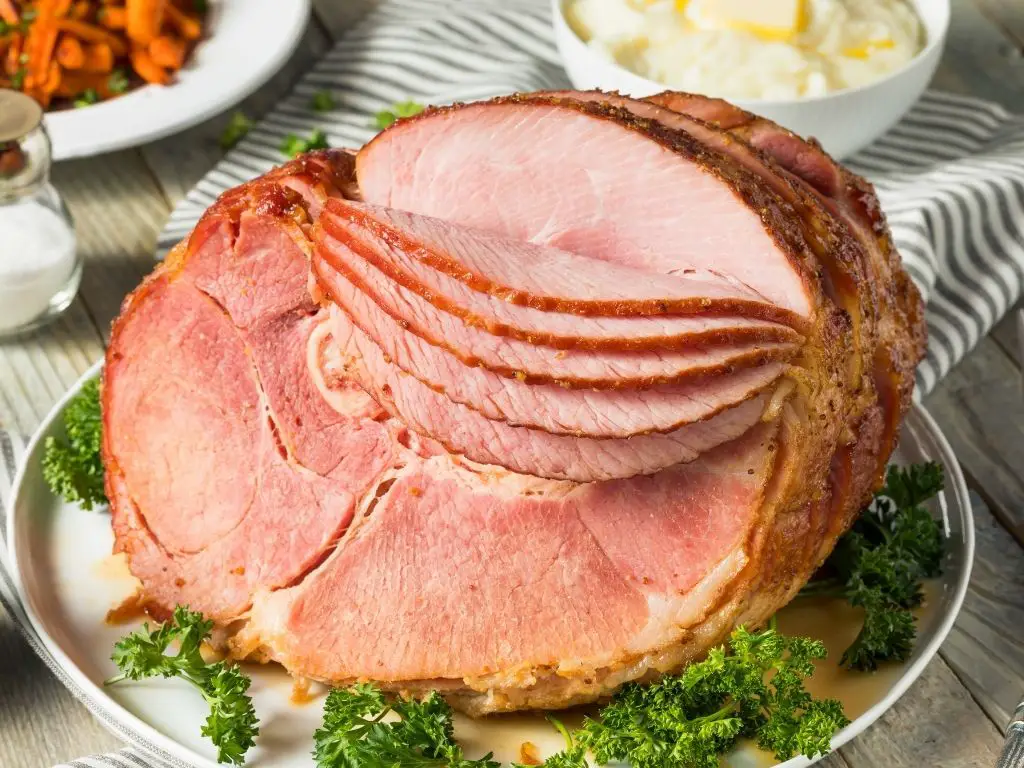Sous vide is a popular cooking method that involves vacuum sealing food in a bag, then cooking it to a precise temperature in a water bath. This results in food that is perfectly cooked edge-to-edge without over or undercooking.
When getting started with sous vide, one of the first questions is – can I use any bag for sous vide cooking?
No, not all bags are suitable for sous vide cooking. It’s best to use food-safe plastic bags made from BPA-free and phthalate-free polyethylene or polypropylene, vacuum-sealed bags, or reusable silicone bags. Mason jars can also be used for small items. Avoid bags not intended for sous vide as they may leach harmful chemicals under high temperatures.

Sous Vide Products I Use Every Day
As an Amazon affiliate, I earn from qualifying purchases.
Last update on 2025-01-02 / Affiliate links / Images from Amazon Product Advertising API
In this article, we’ll explore the different types of bags that can be used for sous vide cooking, as well as the pros and cons of each option. We’ll also cover any precautions you should take and safety concerns to be aware of when choosing bags for sous vide.
What Types of Bags Can I Use For Sous Vide?
There are a few different options when it comes to choosing bags for sous vide cooking:
1. Food-Safe Plastic Bags
Food-grade plastic bags made from polyethylene or polypropylene are a popular choice for sous vide. These BPA-free and phthalate-free bags are designed to be non-toxic and withstand boiling water. Many brands make bags specifically marketed for sous vide.
2. Vacuum Sealed Bags
Using a vacuum sealer to remove air from the bag before sealing can help food retain moisture and ensure even cooking. Vacuum sealer bags have a multi-layer design that allows efficient vacuum sealing.
3. Reusable Silicone Bags
Reusable silicone sous vide bags are growing in popularity. They are naturally BPA-free and phthalate-free and can withstand the high temperatures of sous vide cooking.
4. Mason Jars
Wide-mouth mason jars make convenient vessels for sous vide cooking smaller items or desserts. The screw-top lid creates a tight seal.
What Are The Pros and Cons of Different Bags for Sous Vide?
Let’s look at the unique benefits and drawbacks of each bag type:
1. Plastic Bags
Pros: Inexpensive, convenient for large cuts of meat or batches of food, easy to vacuum seal.
Cons: Can be prone to breakage over time, not reusable or eco-friendly.
2. Vacuum Sealed Bags
Pros: Remove air for better cooking and storage, sturdy material resists breakage.
Cons: Require a vacuum sealer, pricier than regular plastic bags.
3. Reusable Silicone Bags
Pros: Reusable, eco-friendly, naturally BPA/phthalate free.
Cons: Prone to staining, can retain odors, not suitable for very hot liquids.
4. Mason Jars
Pros: Reusable, easy to seal, convenient for small batches.
Cons: Glass can break in high heat, not suitable for large cuts of meat.
What Precautions Should I Take When Using Bags for Sous Vide?
To safely use bags for sous vide cooking:
- Avoid overfilling bags which can cause them to break and lead to contamination. Leave around 20% empty space.
- Ensure no air bubbles are trapped inside, which can cause uneven cooking.
- Use durable food-grade bags rated for boiling water.
- Avoid reusing disposable bags which can develop unseen tears over time.
- Double bag delicate or bony food to prevent punctures.
- Ensure any reusable bags are thoroughly cleaned between uses.
Are There Any Safety Concerns With Using Bags For Sous Vide?
The hot water bath used in sous vide cooking can cause chemicals like BPAs or phthalates to leach out of plastic bags into food if the wrong bags are used. To avoid this:
- Use BPA-free and phthalate-free bags designed for boiling temperatures.
- Do not reuse plastic bags rated for one-time use only.
- Avoid bags containing PVC or other harsh chemicals.
- Don’t use simple plastic food storage bags not intended for sous vide.
As long as appropriate heat-rated bags are used, sous vide cooking is considered very safe, as the vacuum sealing protects food from contamination.
What Is The Best Way To Store Food After Sous Vide?
After cooking sous vide, it’s best to transfer food out of the original plastic bag for storage. Allow cooked food to cool, then transfer to a BPA-free container or wrap in food-grade plastic wrap. This prevents chemical leaching that can occur in warm leftover food.
For short term storage, food can remain sealed in sous vide bags. For longer storage, remove excess air and re-seal using a vacuum sealer or zipper-style closure.
What Are The Alternatives To Using Bags For Sous Vide?
While bags are the most convenient approach, sous vide can be done without bags using:
- Glass jars – Small mason jars work well, especially for desserts.
- Silicone molds – Reusable molds keep food contained without plastic.
- Browning – Quickly browning meat or skin after cooking gives a similar result to traditional methods.
Conclusion
In summary, not all bags work well for sous vide cooking. For the best results, opt for BPA-free plastic bags or vacuum sealer bags specifically designed to withstand boiling water. Consider silicone bags or mason jars for an eco-friendly option. Always follow safety precautions and avoid reusing disposable bags. With the right bag, sous vide makes cooking flavorful, foolproof dishes easy.


![IMPRESA [10 pack] Sous Vide Magnets to Keep Bags Submerged & In Place - Sous Vide Accessories to Stop Floating Bags & Undercooking - Great Alternative to Sous Vide Weights, Balls, Clips, & Racks](https://m.media-amazon.com/images/I/41zHpl8G2lL._SL160_.jpg)

